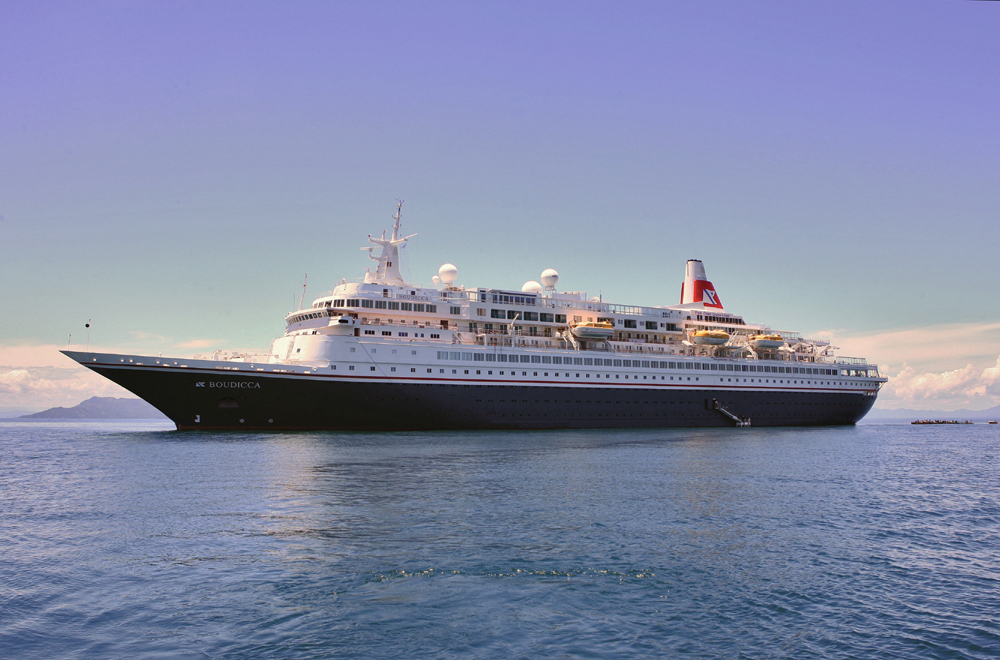The pandemic is causing the cruise industry to accelerate the retirement of many older ships. Fred. Olsen Cruise Lines, which operates in the British market, confirmed that is has sold its two 1970s vintage cruise ships adding to the list of older ships that are unlikely to survive the extended pause in cruise operations.
Typically, a ship’s economic life is considered to be 20 to 25 years. In the cruise industry, however, which was undergoing rapid expansion over the past decade, it was common to find older ships continuing to be a vital part of the industry. While adding newer ships that attract higher fares, many of the larger cruise lines use their older ships to expand into smaller markets and regional ports or they sell those ships to smaller companies that typically are not building new ships.
The older ships are smaller in size and lack many of the headline getting amenities. However, those ships have been able to find niche markets and develop a loyal following from travellers who either enjoy the more classical designs or smaller size of the older ships.
Fred. Olsen had previously announced that it was acquiring two ships from Holland America Line that would be used to replace the older, smaller ships in its fleet. “Following the recent announcement that Black Watch and Boudicca are retired from our fleet, we can announce that both ships have now been sold and will begin a new life as accommodation vessels for a company in Turkey,” said the statement they issued today. “We expect that the ships will set sail soon, with Boudicca due to leave Rosyth for the final time as early as next week, and Black Watch to follow. The crew are hard at work preparing them for their journeys and ensuring that that they are ready for their new home.”
The announcement that the two ships that had both been built in the early 1970s had been sold for use as accommodation ships came as a surprise to many observers who speculated that they would be sold for scrap. Some industry insiders are still questioning if this might be an interim step for the ships before being scrapped.
The Black Watch and Boudicca had been among the first purpose-built modern cruise ships and pioneers in the modern luxury cruise market when they were introduced for Royal Viking Line in the 1970s. They operate long cruises, including around the world voyages, later being sold and operated by a series of cruise lines before being acquired by Fred. Olsen, which used them to begin its expansion in the cruise industry. Olsen invested in overhauls, including new motors, for both ships that helped to extend their careers.
Both of the 28,000 gross ton cruise ships have been laid up in Scotland during the pandemic. After the retirement announcement, reports began to surface that they were being stripped of fittings to be used on the two newly acquired ship. This week, they began to remove all of the Fred. Olsen branding on the ships, including starting to repaint their funnels in black.
While among the oldest operating cruise ships, the Black Watch and Boudicca are not the only cruise ships of this vintage not to survive the suspension in cruising. In the spring, another cruise line focused on the British market, Marella Cruises owned by Germany’s TUI Group, announced that it had accelerated the retirement of its 1984-built ship the Marella Celebration. The 33,000 gross ton cruise ship was recently renamed and is laid up in Greece reportedly bound for the scrapyards in Turkey. Sitting next to her is the last of the Spanish cruise line Pullmantur’s ships the Horizon which was built in 1988 and reportedly was also sold for scrap after Pullmantur filed for insolvency in Spain.
The accelerated retirement of older cruise ships was also the theme of Carnival Corporation’s ship disposal program. While, so far, most of Carnival’s sales have been sold to smaller cruise lines, three of Carnival Cruise Line’s 70,000 gross ton ships built in the early 1990s were sold to the scrapyards in Turkey where Carnival Corporation says they are being “recycled.” Beached at the same scrapyard are the 73,000 gross ton Sovereign and Monarch built in the late 1980s and early 1990s that had been operating for Pullmantur.
In early October the fate of the former cruise ships marketed by Cruise and Maritime Voyages will also be determined. Ranging in ages from being built in the 1960s to the early 1990s, those ships are being auctioned in the UK for debts after CMV went into receivership during the summer.
Most of the other major cruise lines have so far said they do not anticipate retiring any of their cruise ships. Most of their fleets, however, are younger having been updated as new ships were built in recent years.
Source: Maritime Executive






